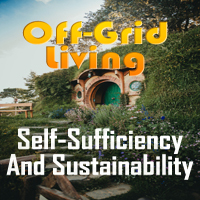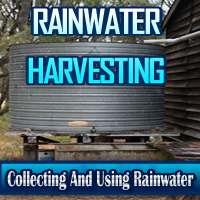


Compact Living With A Sustainable Touch

Small footprint homes, also known as tiny homes or micro-homes, are a response to the growing need for sustainable and efficient housing solutions in our ever-expanding urban environments. These homes are designed to maximize space utilization, minimize resource consumption, and reduce environmental impact. They represent a shift towards simpler, more mindful living that has gained popularity worldwide.
One of the defining features of small footprint homes is their size. These homes are typically much smaller than traditional houses, often ranging from just a few hundred to a few thousand square feet. The emphasis is on efficient design to make the most of every inch, both in terms of functionality and aesthetics.
Key aspects of small footprint homes include:
Sustainability: Small footprint homes are known for their sustainability. The reduced size and efficient design mean fewer materials are needed for construction, resulting in a smaller environmental footprint. Many small footprint homes also incorporate eco-friendly materials and energy-efficient systems.
Cost-Effective: Smaller homes are generally more affordable, making homeownership accessible to a broader range of people. Reduced utility costs and maintenance expenses contribute to long-term savings.
Minimalism: Small footprint living encourages minimalism, a lifestyle that prioritizes quality over quantity and focuses on reducing clutter and material possessions. This approach often leads to a simpler, less stressful way of life.
Mobility: Some small footprint homes are built on wheels or designed for easy relocation. This provides homeowners with the freedom to move or travel as they wish, leading to a more mobile and adventurous lifestyle.
Energy Efficiency: Smaller spaces are easier to heat and cool, resulting in lower energy consumption. Many small footprint homes incorporate energy-efficient appliances, solar panels, and other sustainable technologies to further reduce their carbon footprint.
Community Living: Some small footprint housing developments encourage community living. Shared spaces and communal facilities foster social interaction and a sense of belonging among residents.
Innovation: The small footprint housing movement has spurred innovation in design and construction. Architects and builders are coming up with creative solutions to maximize space utilization, often incorporating modular and multi-functional furniture.
While small footprint homes offer numerous advantages, they also come with unique challenges. The compact size requires careful organization and decluttering, and it may not be suitable for individuals or families with significant storage needs. Moreover, zoning regulations and building codes in some areas may limit the construction of such homes.
Small footprint homes are a sustainable and innovative response to the housing challenges of our time. Their smaller size, focus on sustainability, and emphasis on minimalism make them an appealing option for those seeking to reduce their environmental impact and lead a more intentional, cost-effective, and community-oriented lifestyle. As urbanization continues and concerns about resource consumption and climate change grow, small footprint homes are poised to play an increasingly prominent role in shaping the future of housing design. Whether you're drawn to the idea of downsizing, seeking a more eco-friendly living arrangement, or looking for an affordable housing solution, small footprint homes provide a unique and promising alternative.
The Heart Of Gardening Success
 2. Soil Care: Healthy soil is the foundation of strong, vibrant plants. Regularly assess the quality of your garden soil and amend it as needed. Composting, mulching, and using organic matter can improve soil fertility and structure. Understanding your soil's pH and nutrient levels will also help you select plants that are well-suited to your garden's conditions.
2. Soil Care: Healthy soil is the foundation of strong, vibrant plants. Regularly assess the quality of your garden soil and amend it as needed. Composting, mulching, and using organic matter can improve soil fertility and structure. Understanding your soil's pH and nutrient levels will also help you select plants that are well-suited to your garden's conditions.
3. Pruning And Deadheading: Pruning and deadheading are essential maintenance tasks that promote plant health and aesthetic appeal. Pruning involves trimming back overgrown or damaged branches, which encourages new growth and prevents disease. Deadheading is the removal of spent flowers to stimulate further blooms and keep the plant looking tidy.
4. Pest And Disease Management: Keep an eye out for common pests and diseases in your garden. Early detection and appropriate action are essential for preventing infestations. Consider using natural pest control methods to minimize the use of chemicals, which can harm beneficial insects and pollinators.
5. Fertilizing: Plants need nutrients to thrive, and fertilizing can provide a boost when your garden soil is lacking. Select a balanced, slow-release fertilizer and follow the recommended application rates. Over-fertilization can be harmful, so always adhere to the instructions on the product.
6. Mulching: Mulching is a beneficial practice that conserves moisture, suppresses weeds, and regulates soil temperature. Apply a layer of organic mulch around your plants to help maintain soil moisture and prevent temperature extremes.
7. Support And Staking: Tall or heavy plants often require support to prevent them from bending or breaking. Use stakes, cages, or trellises to prop up plants that might otherwise become too top-heavy.
Navigating A Changing World
 1. Climate Change
1. Climate Change
Climate change, primarily driven by the emission of greenhouse gases such as carbon dioxide and methane, is arguably the most urgent environmental challenge. It results in rising global temperatures, melting glaciers, sea-level rise, and an increase in the frequency and severity of extreme weather events. Climate change has far-reaching impacts on agriculture, water resources, biodiversity, and human societies, with vulnerable communities often bearing the brunt of its consequences.
2. Biodiversity Loss
The loss of biodiversity is a global crisis with ramifications for ecosystems and human well-being. Habitat destruction, pollution, overfishing, and invasive species all contribute to the decline of species and ecosystems. The loss of biodiversity threatens food security, disrupts ecosystems' ability to adapt to environmental changes, and compromises the availability of life-saving medicines derived from nature.
3. Air And Water Pollution
Air and water pollution continue to affect the quality of our environment and public health. Pollutants released from industrial activities, transportation, and agriculture contribute to air pollution, leading to respiratory diseases and other health issues. Water pollution, often caused by untreated sewage, agricultural runoff, and industrial discharges, contaminates water sources, harming aquatic ecosystems and endangering drinking water quality.
4. Deforestation
Deforestation, primarily driven by agricultural expansion, urbanization, and illegal logging, results in the loss of vital forests worldwide.
Simplifying Life In The Modern World
 Defining Convenience Solutions
Defining Convenience Solutions
Convenience solutions are innovations that aim to eliminate or reduce the hassles and inconveniences we encounter in our everyday lives. They encompass a broad spectrum of offerings, from mobile apps and smart devices to delivery services and automation technologies. The overarching goal is to enhance our overall quality of life by minimizing the effort required to accomplish various tasks.
Home Automation
One of the most prominent categories within convenience solutions is home automation. Smart devices and systems are designed to control and manage various aspects of daily living. This includes intelligent thermostats that optimize heating and cooling, smart locks that enhance security, and voice-activated virtual assistants that can answer questions and perform tasks with simple commands. Home automation makes daily life more comfortable and efficient.
Meal Delivery Services
Convenience solutions have revolutionized meal preparation. Meal delivery services, such as Blue Apron, HelloFresh, and DoorDash, provide ready-to-cook meal kits and restaurant food delivered right to your doorstep. These services save time, reduce the need for grocery shopping, and offer a variety of dining options without leaving the comfort of your home.
Mobile Banking And Payments
Convenience solutions extend to the financial realm as well. Mobile banking apps and contactless payment methods enable quick and secure transactions. From checking balances to making payments and transferring funds, these technologies make managing your finances more efficient and accessible.






The Dawn Of Intelligent Living
 Smart Living At Its Best
Smart Living At Its Best
Future-ready homes are characterized by their integration of cutting-edge technology, automation, and intelligent systems. These homes use the power of the Internet of Things (IoT) to create an interconnected ecosystem, where devices and appliances can communicate and work together seamlessly. From lighting and climate control to security and entertainment, every aspect of daily life is optimized for convenience and efficiency.
Energy Efficiency And Sustainability
A central focus of future-ready homes is sustainability. These homes incorporate energy-efficient solutions that not only reduce utility costs but also minimize environmental impact. Solar panels, smart lighting, and advanced insulation systems are just a few examples. Future-ready homes can harvest and store energy, monitor usage, and make real-time adjustments to conserve resources.
Security And Peace Of Mind
Security is paramount in future-ready homes. Advanced surveillance systems with high-resolution cameras, motion detectors, and smart locks provide unparalleled protection for homeowners. These systems can be monitored and controlled remotely through smartphones, giving homeowners peace of mind and the ability to respond swiftly to any security concerns.
Customization And Personalization
Future-ready homes are designed to adapt to the needs and preferences of their inhabitants. For example, intelligent thermostats learn your temperature preferences and create customized schedules. Personal virtual assistants, such as Amazon's Alexa or Google Assistant, respond to voice commands to control various functions within the home, including lighting, music, and climate control. This level of personalization creates a truly unique living experience.
A Clean Home And A Clean Conscience
 How To Get Started With Green Cleaning
How To Get Started With Green Cleaning
Assess Your Current Cleaning Products: Start by taking a look at the cleaning products you use. Identify which ones contain harsh chemicals and consider replacing them with greener alternatives.
Make Your Own Cleaning Solutions: Many effective cleaning solutions can be made using simple ingredients found in your pantry. For example, a mixture of vinegar and water can be a powerful all-purpose cleaner.
Read Labels: When purchasing cleaning products, read labels carefully. Look for certifications like "EcoLogo" or "Green Seal" to ensure that the product meets environmental and health standards.
Choose Reusable Cleaning Tools: Opt for reusable cleaning tools like microfiber cloths and mop heads to reduce waste.
Reduce, Reuse, Recycle: Use cleaning products and containers that are recyclable or refillable. This minimizes your environmental footprint.
The Green Cleaning Revolution
Green cleaning is not just a trend; it's a fundamental shift towards responsible and sustainable cleaning practices.